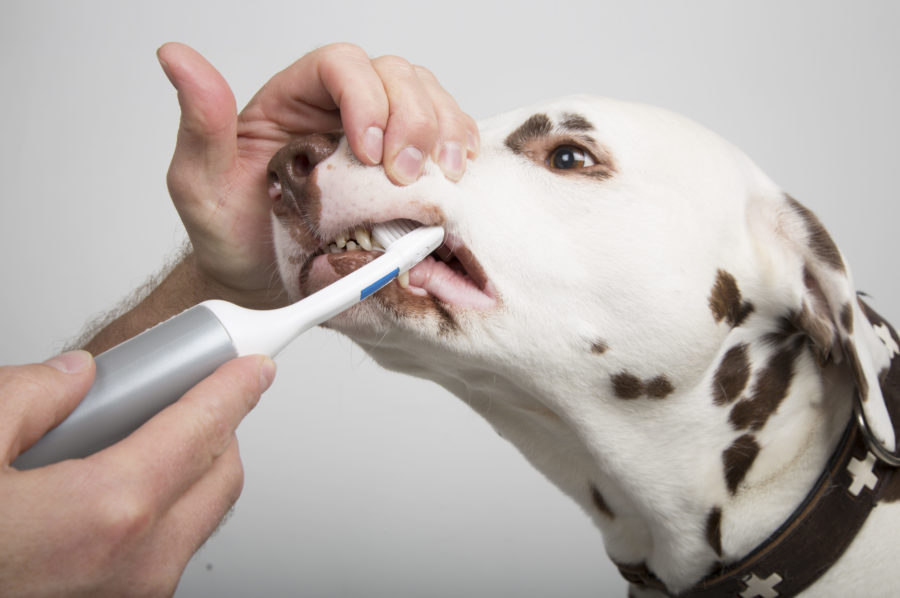Learn how to brush your dog’s teeth the right way with this easy, step-by-step guide. Improve your dog’s dental health and prevent bad breath and costly vet bills.
Why Brushing Your Dog’s Teeth Matters
Just like humans, dogs can suffer from dental issues such as plaque buildup, gum disease, and tooth decay. In fact, according to veterinarians, over 80% of dogs over the age of 3 show signs of dental disease.
If left unchecked, ignoring your dog’s oral hygiene can lead to the following problems:
- Bad breath (halitosis)
- Painful infections
- Tooth loss
- Expensive veterinary procedures
Fortunately, brushing your dog’s teeth regularly is one of the simplest and most effective ways to protect their health.

What You’ll Need Before You Start
Before diving into the brushing process, it’s essential to gather the right tools. With the proper items on hand, the experience will be smoother and less stressful for both you and your dog.
Here’s what you’ll need:
- Dog toothbrush: A soft-bristled toothbrush or finger brush designed specifically for dogs.
- Dog toothpaste: Use only toothpaste made for pets — importantly, never use human toothpaste, as it can be toxic to dogs.
- Towel or mat: This helps keep your dog steady and your area clean.
- Calm environment: Ideally, choose a quiet time when your dog is relaxed, such as after a walk or meal.
Pro Tip: To make things easier, choose a toothpaste flavor your dog enjoys, such as chicken or peanut butter. This can turn brushing into a treat-like experience.

Step-by-Step: How to Brush Your Dog’s Teeth
Step 1: Let Your Dog Get Comfortable
Before even touching their teeth, let your dog sniff and taste the toothpaste. Gently touch their mouth, teeth, and gums with your finger for a few seconds to build trust.
Step 2: Introduce the Toothbrush
Show the toothbrush and let them sniff it. Add a bit of toothpaste to the brush and let them lick it so they associate it with something positive.
Step 3: Start with the Front Teeth
Gently lift your dog’s upper lip and begin brushing the front teeth in circular motions. Speak softly and calmly during the process.
Step 4: Move to the Back Teeth
Gradually move to the sides and back of the mouth. Focus on the outer surfaces where plaque builds up most. Try to spend about 30 seconds per side.
Step 5: Praise and Reward
End the session with lots of praise, petting, or a small dental-friendly treat. This builds a positive association and makes future sessions easier.
How Often Should You Brush Your Dog’s Teeth?
Ideally, daily brushing is best.
However, brushing at least 2–3 times a week can still make a big difference in your dog’s oral health.
Common Mistakes to Avoid
- Using human toothpaste (contains xylitol, which is toxic to dogs)
- Brushing too aggressively, which can hurt their gums
- Skipping regular sessions — consistency is key
- Ignoring signs of dental issues (red gums, bad breath, reluctance to eat)
Extra Dental Care Tips
While brushing is essential, you can also support your dog’s dental health with:
- Dental chews
- Water additives for oral hygiene
- Regular vet checkups
- A healthy diet
Pro Tip: Some toys are designed to help clean your dog’s teeth while they chew — a fun way to reduce plaque buildup.
A: No. Baking soda is too abrasive and can upset your dog’s stomach. Only use toothpaste made for dogs.
A: Start slow, offer lots of praise and treats. Use your finger at first, then slowly introduce a brush.
A: Yes. Yearly cleanings at the vet can remove tartar and check for hidden issues, even with good brushing habits.
Final Thoughts
Brushing your dog’s teeth might seem intimidating at first, but with patience and consistency, it can become a normal part of your pet care routine. Keeping your dog’s mouth clean not only prevents bad breath but also contributes to a longer, healthier life.
Start small, stay calm, and celebrate progress — your dog (and your wallet) will thank you.
click here to see more articles: How to Brush Your Dog’s Teeth: A Step-by-Step Beginner’s GuideHave any questions about dog dental care? Drop a comment below or contact us — we’re happy to help you and your furry friend!

Leave a Reply